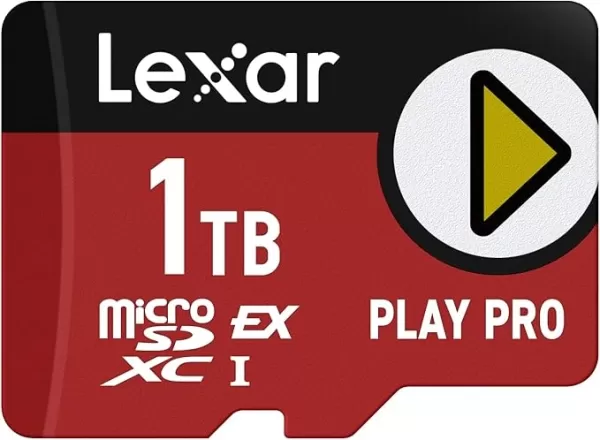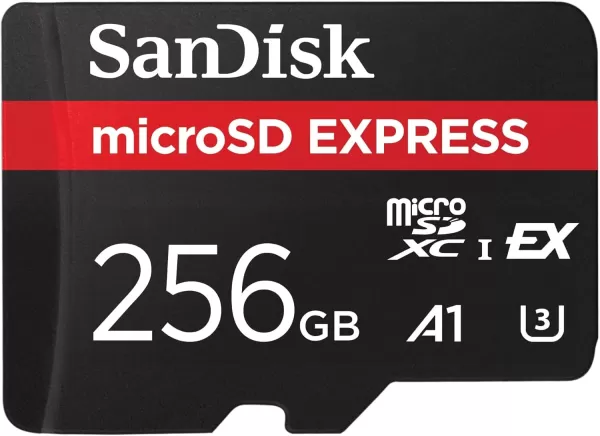When Nintendo unveiled the Nintendo Switch 2 last week, they announced that the console exclusively supports MicroSD Express cards for expansion. This decision may be inconvenient for those with existing MicroSD collections, but it's a logical choice given the significant speed advantage of MicroSD Express cards.
These cards leverage a PCIe 3.1 interface to achieve read/write speeds comparable to the Universal Flash Storage (UFS) used in the Switch 2’s internal storage. This advancement theoretically enables games on the expansion card to load as quickly as those stored internally, though it means users can't utilize slower, more affordable non-Express MicroSD cards.
MicroSD vs. MicroSD Express
Over the years, MicroSD cards have seen six different speed ratings. Initially, they offered speeds of just 12.5MB/s, which is slow by today's standards. Subsequent iterations improved this, with SD High Speed reaching 25MB/s, and the latest, SD UHS III, hitting 312MB/s. However, the introduction of the SD Express standard five years ago marked a significant leap in performance.
The key differentiator for SD Express is its use of a PCIe 3.1 interface, a stark contrast to the slower UHS-I interface of traditional SD cards. This PCIe interface is the same as that used by high-speed NVMe SSDs, enabling full-sized SD Express cards to achieve transfer speeds up to 3,940MB/s. While MicroSD Express cards don't reach these peak speeds, they still offer impressive performance, topping out at 985MB/s, which is three times faster than the fastest non-Express MicroSD cards.
Why Does the Switch 2 Require MicroSD Express?
Although Nintendo typically keeps the rationale behind their hardware decisions under wraps, the primary reason for requiring MicroSD Express cards seems to be speed. Games loaded from a MicroSD Express card can perform significantly better than those from a traditional UHS-I MicroSD card, thanks to the PCIe 3.1 interface. This requirement might also signal a trend for future handheld gaming PCs.
The Nintendo Switch 2's internal storage has been upgraded to UFS from eMMC, aligning with the need for faster expansion storage. Early demos suggest substantial load time improvements, with Polygon reporting a 35% faster fast-travel load time for games like Breath of the Wild, and Digital Foundry noting a 3x improvement in initial load times. These enhancements could be attributed to the faster internal storage or the improved CPU and GPU, which can handle data more efficiently. The goal is to ensure that future games requiring faster storage aren't bottlenecked by slower SD cards.
Moreover, this move paves the way for even faster storage solutions in the future. The current fastest standard, SD 8.0 Specification, allows full-size SD Express cards to reach 3,942MB/s. While MicroSD Express cards aren't there yet, they could reach these speeds in the coming years if the Switch 2 supports them.
MicroSD Express Capacity Options
MicroSD Express cards have been slow to gain traction, but the launch of the Nintendo Switch 2 is likely to change this. Currently, options are limited. Lexar, for example, offers a single MicroSD Express card in capacities of 256GB, 512GB, and 1TB, with the 1TB version priced at $199.

### Lexar Play Pro MicroSD Express
0 See it at Amazon
SanDisk, on the other hand, offers only a 256GB MicroSD Express card, matching the internal storage of the Switch 2. As the Switch 2 hits the market, we can expect a modest selection of MicroSD Express cards with capacities up to 512GB. However, as demand grows, companies like Samsung are likely to introduce higher-capacity options.

### SanDisk MicroSD Express 256GB
0 See it at Amazon

 Latest Downloads
Latest Downloads
 Downlaod
Downlaod




 Top News
Top News









